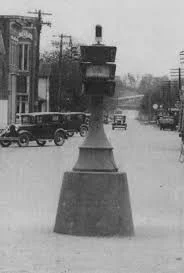2021 was another year of growth and progress for the nonprofit Hoosier Heartland Trolley Company, as the organization not only moved Union Traction Co. interurban no. 429 closer to revival, but also expanded capacity and resources. We hope you find our progress inspiring and consider a tax-deductible donation or membership to support this project, which will facilitate educational, community placemaking and economic development opportunities for Hoosiers.
Electrifying Indianapolis’ Streetcar System for the 20th Century
Electricity – the invention that defined the beginning of the 20th century. Indianapolis’ streetcar system adopted the technology in the 1890s – ushering in the new century with it. Beginning in 1864, transportation in Indianapolis was provided by horse or mule-drawn carriages on rails through the street. By 1890, Citizens Street Railroad Company, the dominant streetcar company in the city, was operating 260 cars with some 1100 horses and mules. The inefficiency ultimately proved to be problematic for the City of Indianapolis.
Sparking Innovation – Electrifying Indiana’s First Traffic Light
Leslie Haines was born in 1883 in rural Hamilton County, Ind. at Carmel, which numbered less than 400 residents at the time. Following his dream, Haines enlisted in 1906 and circumnavigated the globe in Roosevelt’s Great White Fleet, training under Dr. Lee DeForest, a leader in the development of wireless technology. Meanwhile, the Union Traction Company of Indiana had set up shop in Carmel, allowing Carmel residents and storeowners to tap into a valuable new asset: electricity.
Bracing for the Automobile – Electric’s “One Man” Program
In 1935, Indiana Railroad, which was the dominating interurban (high-speed electric train car between cities) route resulting from the acquisition of nearly every interurban line in Central Indiana, was looking for ways to cut costs and standardize equipment. Competition from automobiles and busses were injuring the interurban line’s finances, as the personalization and ease of these modes of transportation had great appeal.




